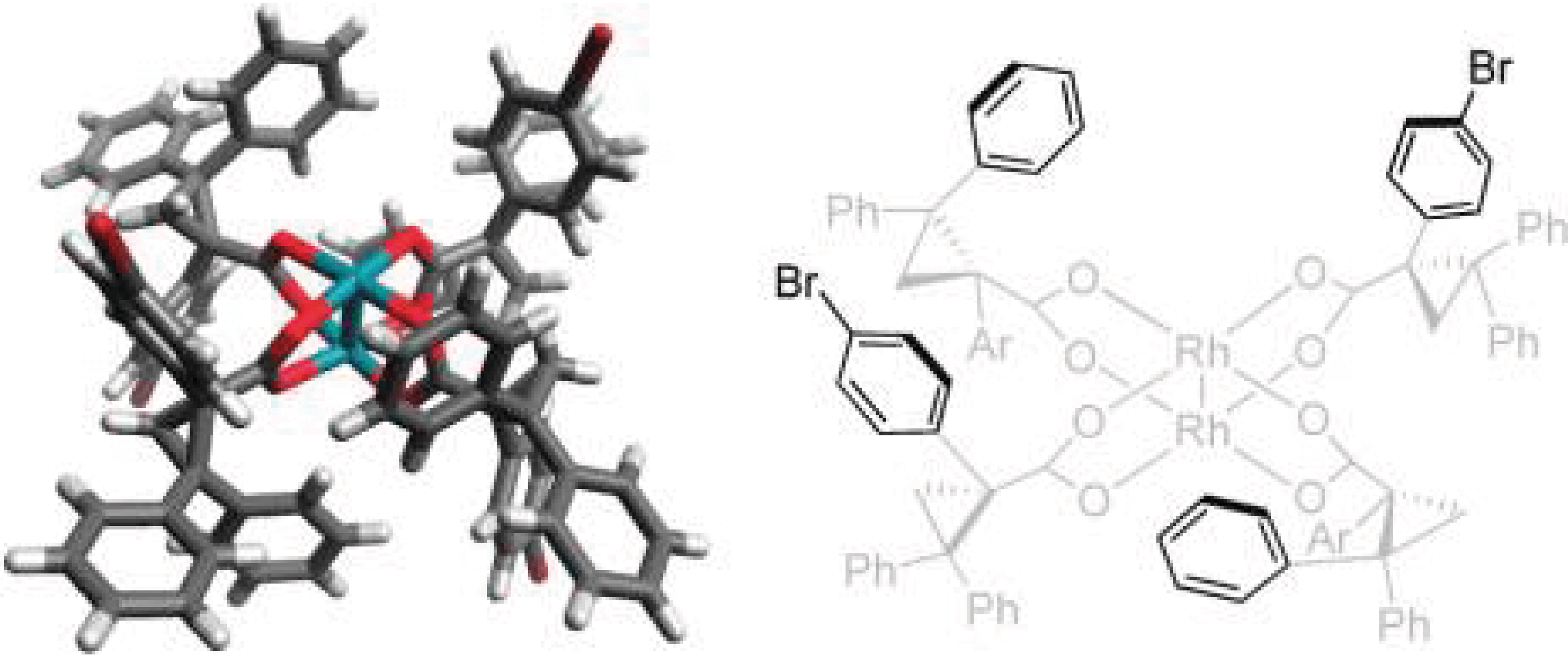D2-Symmetric Dirhodium Catalyst Derived from a 1,2,2-triarylcyclopropanecarboxylate Ligand: Design, Synthesis and Application
Qin, C., Boyarskikh, V., Hansen, J. H. Hardcastle, K. I., Musaev, D. G.;Davies, H. M. L.
J. Am. Chem. Soc.,
2011, 19198-19204; 10.1021/ja2074104

11/2011
A key factor in advancing C–H Functionalization is the development of new catalysts, novel systems not only have a marked impact on the efficiency and selectivity of these transformations, but also open the door to new reactivities and possibilities within C–H Functionalization. This collaborative report between the Davies and Musaev groups describes a collaborative approach to the design of new rhodium(II)-catalysts.
Dirhodium tetrakis-(R)-(1-(4-bromophenyl)-2,2-diphenylcyclopropanecarboxylate) (Rh2(R-BTPCP)4) was found to be an effective chiral catalyst for enantioselective reactions of aryl- and styryldiazoacetates. Highly enantioselective cyclopropanations, tandem cyclopropanation/Cope rearrangements and a combined C–H functionalization/Cope rearrangement were achieved using Rh2(R-BTPCP)4 as catalyst.
The advantages of Rh2(R-BTPCP)4 include its ease of synthesis, its tolerance to the size of the ester group in the styryldiazoacetates, and its compatibility with dichloromethane as solvent. Computational studies suggest that the catalyst adopts a D2-symmetric arrangement, but when the carbenoid binds to the catalyst, two of the p-bromophenyl groups on the ligands rotate outward to make room for the carbenoid and the approach of the substrate to the carbenoid.